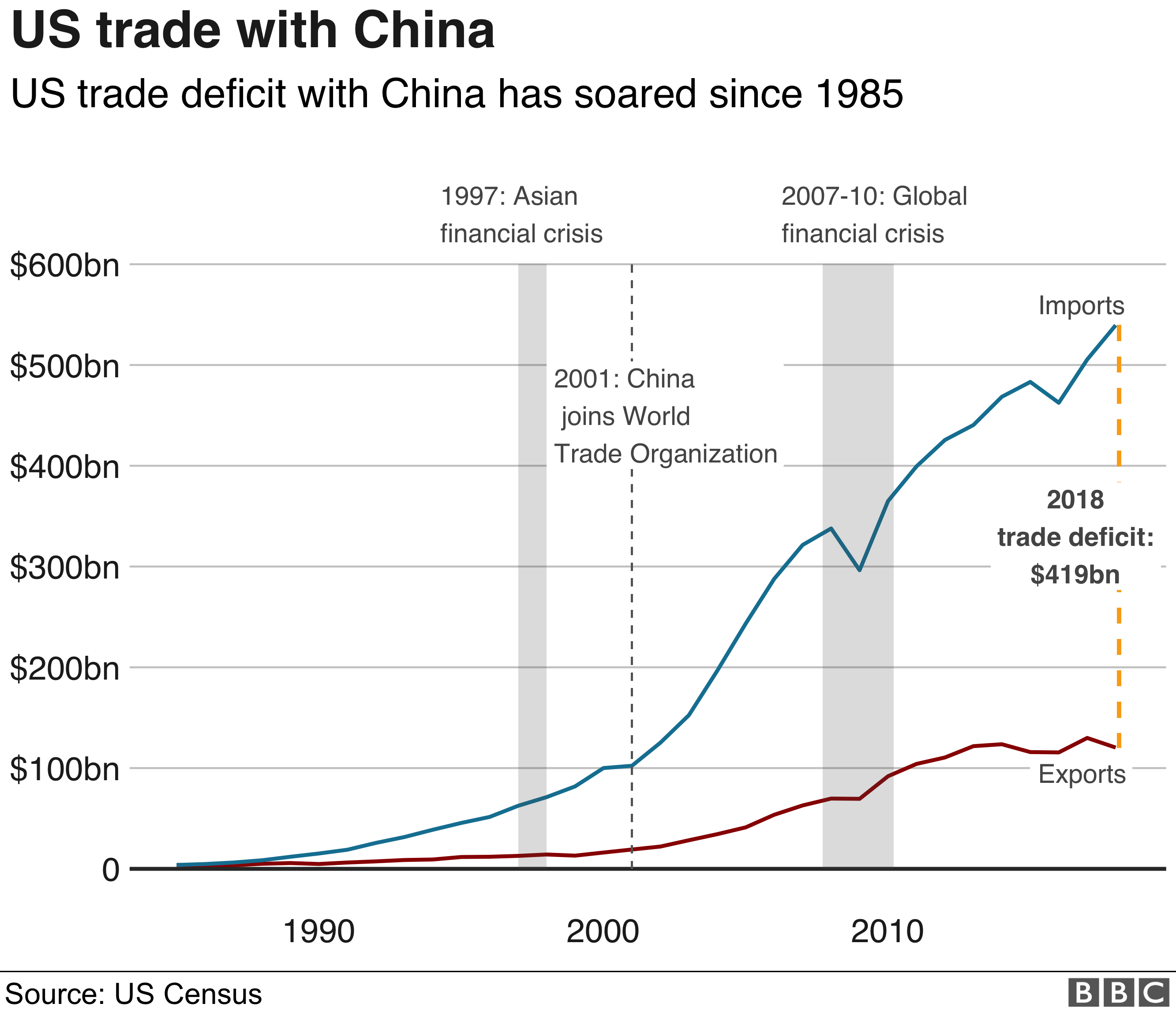Trump's Tariffs: Court Challenges And Judicial Review

Table of Contents
Legal Basis for Trump's Tariffs
Many of the tariffs implemented during the Trump administration were justified under Section 301 of the Trade Act of 1974. Understanding this section is critical to grasping the legal basis for the ensuing court challenges.
Section 301 of the Trade Act of 1974
Section 301 grants the President broad authority to investigate and take action against foreign countries engaging in unfair trade practices. This includes imposing tariffs as a retaliatory measure. However, the vaguely worded provisions of Section 301 led to considerable ambiguity and became a focal point for legal disputes.
- Process under Section 301: The process typically involves an investigation by the United States Trade Representative (USTR) to determine whether unfair trade practices exist. If unfair practices are found, the President can then authorize retaliatory measures, including tariffs.
- Presidential Authority: The broad language of Section 301 grants significant discretion to the President in defining "unfair trade practices" and determining appropriate responses. This broad authority was a major source of contention in the legal challenges.
- Criticisms of Broad Interpretation: Critics argued that the Trump administration interpreted Section 301 too broadly, using it to justify tariffs based on national security concerns rather than solely on unfair trade practices. This expansion of the section's original intent fueled many legal challenges.
- Specific Examples: The steel and aluminum tariffs, imposed on national security grounds, and the tariffs on Chinese goods, levied in response to alleged intellectual property theft and forced technology transfer, are prime examples of tariffs implemented under Section 301 and consequently faced significant legal scrutiny.
Constitutional Challenges to Presidential Authority
Beyond the interpretation of Section 301, several legal challenges directly questioned the constitutionality of the tariffs themselves. These challenges centered on arguments that the tariffs exceeded the President's constitutional authority or violated due process rights.
- Arguments Made by Challengers: Challengers argued that the tariffs constituted an unlawful exercise of legislative power, encroaching on the Congress's constitutional authority to regulate commerce with foreign nations. They also contended that the imposition of tariffs without proper notice and opportunity to be heard violated due process rights.
- Separation of Powers: A core argument revolved around the separation of powers doctrine, questioning whether the President's actions in imposing tariffs overstepped the boundaries of executive authority.
- Relevant Supreme Court Precedents: Challengers and defendants both cited various Supreme Court precedents regarding presidential power in trade matters, leading to extensive legal arguments about the interpretation and application of these prior rulings. The lack of clear precedent in the context of such sweeping tariff actions created fertile ground for legal battles.
Key Court Challenges and Their Outcomes
Numerous lawsuits were filed challenging specific tariffs imposed by the Trump administration. The outcomes of these cases significantly impacted the scope and reach of the administration's trade policy.
Cases Against Specific Tariffs
Several cases challenged individual tariffs on various goods, focusing on different aspects of the legal arguments.
- Summarized Cases: While specific case names and citations would require a separate legal research paper, cases challenging steel and aluminum tariffs frequently cited violations of the Due Process Clause and exceeded presidential authority. Similarly, cases against tariffs on Chinese goods often centered on the proper application of Section 301 and the WTO's rules. Rulings varied depending on the specific arguments presented and the court's interpretation of the law.
- Plaintiffs, Defendants, Courts Involved: These cases involved a mix of domestic companies, foreign governments, and trade associations as plaintiffs, facing the US government as the defendant. Cases were heard in various courts, from district courts to appellate courts, often leading to appeals and further legal battles.
- Reasoning behind Court Decisions: Court decisions highlighted varying interpretations of Section 301, the scope of presidential authority in trade matters, and the application of constitutional principles to trade policy. Some courts found the tariffs to be justified under Section 301, while others questioned the administration's interpretation or found violations of due process.
The Role of the World Trade Organization (WTO)
The WTO dispute settlement mechanism played a significant role in the legal challenges to Trump's tariffs.
- WTO Dispute Settlement Mechanism: Several countries challenged the tariffs through the WTO's dispute settlement system, alleging violations of international trade rules. The WTO's rulings carried significant weight, influencing the legal landscape and potentially leading to retaliatory tariffs from other nations.
- Relevance to the Cases: WTO rulings added another layer of complexity to the legal challenges, as US courts had to consider the implications of international trade law alongside domestic legal principles.
- Implications for the Multilateral Trading System: The Trump administration's actions, and the ensuing legal battles, had significant implications for the multilateral trading system, raising questions about the future of the WTO and the commitment of the US to international trade rules.
- Retaliatory Tariffs: Many countries responded to Trump’s tariffs with their own retaliatory measures, escalating trade tensions and further complicating the legal and economic landscape.
Impact and Implications of Judicial Review
The judicial review of Trump's tariffs had far-reaching consequences for trade policy and the balance of power within the US government.
Impact on Trade Policy
The court decisions significantly influenced the Trump administration's trade policy and its ability to implement its agenda.
- Shaping or Constraining the Administration: Court rulings either upheld or struck down specific tariffs, directly impacting the administration's ability to pursue its trade objectives. This judicial oversight acted as a check on executive power in the area of trade.
- Long-Term Consequences for US Trade Relationships: The legal challenges and their outcomes had lasting consequences for the US's trade relationships with other countries. The disputes damaged trust and fostered uncertainty in the international trading system.
Implications for the Separation of Powers
The judicial review of Trump's tariffs highlighted the crucial role of the judiciary in maintaining the balance of power between the executive and legislative branches.
- Balance Between Executive Power and Judicial Checks: The court challenges demonstrated the judiciary's ability to constrain the executive branch's power in the realm of trade policy, reinforcing the principle of checks and balances.
- Potential for Future Conflicts: The cases revealed the potential for ongoing conflict between the executive and judicial branches on trade policy, highlighting the need for clearer legal frameworks and a greater degree of consensus on presidential authority in this area.
Conclusion
The Trump administration's tariffs triggered a wave of legal challenges, testing the limits of presidential authority and the role of judicial review in US trade policy. The resulting court battles involved complex arguments concerning Section 301, constitutional principles, and international trade law. The outcomes had significant implications for the administration's trade agenda, US trade relationships, and the delicate balance of power between the executive and judicial branches. Understanding the complexities of Trump's tariffs and the associated legal battles is essential for comprehending the evolution of international trade law and policy. Further research into specific case law and WTO rulings is strongly encouraged to gain a more profound understanding of this crucial area. Continue exploring the implications of judicial review on trade policy and the ongoing debates surrounding presidential authority in this critical domain.

Featured Posts
-
 Fortnite Leak Reveals Lara Crofts Imminent Return
May 02, 2025
Fortnite Leak Reveals Lara Crofts Imminent Return
May 02, 2025 -
 Ma Aldhy Ntwqeh Mn Blay Styshn 6
May 02, 2025
Ma Aldhy Ntwqeh Mn Blay Styshn 6
May 02, 2025 -
 Play Station Network Nedir Ve Nasil Giris Yapilir
May 02, 2025
Play Station Network Nedir Ve Nasil Giris Yapilir
May 02, 2025 -
 Bbc Faces Unprecedented Challenges After 1 Billion Income Drop
May 02, 2025
Bbc Faces Unprecedented Challenges After 1 Billion Income Drop
May 02, 2025 -
 Avrupa Birligi Ile Is Birligimiz Yeni Stratejiler Ve Hedefler
May 02, 2025
Avrupa Birligi Ile Is Birligimiz Yeni Stratejiler Ve Hedefler
May 02, 2025
